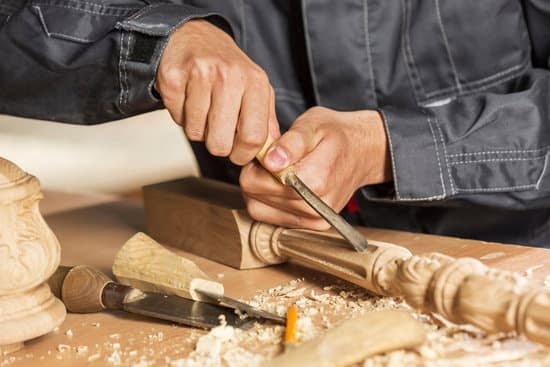Introduction to Sanding Belts for Woodworking
Sanding belts are an essential tool for woodworking projects, offering unique benefits and advantages in comparison to traditional sandpaper sheets. Sanding belts deliver a faster, more efficient finish with less effort. Due to the continuous loop design of belts, they can be used on both sides, extending their life and saving time spent changing out worn-out sand paper.
In addition to their durability and faster finish, sanding belts provide a far better finish than standard sandpaper sheets. With the constant contact of the belt sander across the entire surface of the piece being worked on, it is easier for woodworkers to achieve precise and consistent results. For jobs requiring intricate detail work, such as carving intricate designs or polishing small surfaces that are hard to reach nature with traditional tools, sanding belts provide an ideal solution as they move around with greater ease in tight spaces.
Safety is another important consideration when using a belt sander. Without large particles flying about due to excessive heat buildup associated with grinding disks or discs, woodworkers are able to work confidently knowing that their vision and skin are at less risk from accidental splinters or debris from their projects. Furthermore, the reduced heat generated allows for more comfortable use during prolonged tasks where repeatability is key.
Types of Sanding Belts for Woodworking
Sandpaper is an essential tool in any woodworker’s arsenal. One of the most commonly used types of sandpaper for woodworking is the sanding belt. Sanding belts are made from abrasive grains bonded to a cloth backing, and are available in different lengths, widths, grits, and materials.
The various grits and widths of sandpaper designations indicate the size and density of the particles used to make the abrasive surface. A higher number indicates smaller particles (finer grit) that remove material more slowly but can leave a smoother finish. Generally speaking, large-sized blocks (such as those used for planing boards) and wide planks are better suited to coarse grains (e.g., 36-grit), whereas finer-grain paper (e.g., 180-grit) is better suited to more delicate tasks involving smaller pieces and narrow surfaces. However, since this is a personal preference that depends on the specific project at hand, it’s best to experiment with several different sizes and grains to find what works best for your purpose.
The pros of using coarser grain sandpaper include faster removal rates as well as improved durability; however, this type may leave visible marks or scratches on softer woods such as pine or spruce. For that reason, sanders prefer to use finer grains on these woods instead so they can reduce visibility marks and still achieve polished results without having to spend too much time sanding away remaining marks caused by coarser grits. Additionally, since coarser grits tend to wear out quicker than finer ones due to their higher rate at which they remove material, finer grains last longer while reducing costs associated with replacement purchases over time.
For woodworking projects where you want a higher level of finish or detail work on narrower edges and corners, you should consider using narrower belts with finer grinds like 120-180 grits which require less power but give greater control for intricate detailing. Additionally, wider belts have benefits when working with thicker stock or on larger surfaces by allowing for increased efficiency when covering larger areas in fewer passes compared with narrower belts which require more frequent movement over all the same space just trying to reach each area due to its restrictions created by its size designations
Essential Safety Gear to Use with Sanding Belts for Woodworking
When using sanding belts for woodworking, it is important to wear safety gear such as safety goggles, ear protection, a dust mask, closure-fitting clothing and closed-toe shoes. Safety goggles should be worn to protect your eyes from any pieces of wood that may fly off while sanding. Ear protection should be worn to block out the sound of the sandpaper as well as any other noises you may encounter while working. A dust mask or respirator should be worn to keep airborne particles such as sawdust away from your lungs. Closure-fitting clothing such as overalls or jackets should be used so that pieces of wood do not get snagged in the fabric. And finally, closed-toe shoes are recommended for added foot protection from sharp edges on the wood you are working with.
Video Tutorial Guide to Sanding with Belts for Woodworking
Sanding belts for woodworking come in a variety of sizes and grits to suit any project. Before beginning any project, it is important to determine the size and grit sanding belt necessary for the best results. Generally, finer grits are used for more delicate surface textures, while coarser grits are typically used for heavier work.
When sanding with belts, an understanding of proper tool usage is paramount. It is important to operate the sander at the appropriate speed”too slow or too fast can damage both the material being worked and the sanding belt itself. Additionally, ensuring that pressure is evenly distributed over the entire length of the belt is essential in order to achieve a consistent finish. Furthermore, frequent belt changes are helpful in preventing damage to both your tool and your project.
To help guide woodworkers on how best to sand with belts, some woodworking companies have put together video tutorials covering various techniques and topics ” such as belt selection, speed settings, proper sanding techniques and other tips on using belts effectively. These tutorials often come with step-by-step instructions and visual demonstrations so viewers can observe how top degree finishing guidelines can help them make their projects look great. Furthermore, additional resources like instructional written guides can provide additional details about securely mounting belts on tools as well as explaining how different variables such as speed settings affect results when sanding with belts. Additionally many videos focus on providing information on caring for tools such as a proper maintenance schedule ” including sharpening or replacing blades when needed ” in order to maximize both safety and productivity while working with various types of woods.
Design Tips for Sanding with Belts for Woodworking
When sanding with belts for woodworking, it is important to be mindful of how much pressure you are applying on the belt. Too much pressure can damage both the surface of the wood and the sand belt. It is best to start with a light amount of pressure and move back to a medium amount as you get more comfortable with the process. Additionally, remember to keep the belt moving by avoiding pauses for long periods of time in any one spot. Taking your time instead and lightly sweeping or gliding across an area can help to ensure an even finish. When moving from one grit level to another, it’s important to make sure that each grit has been evenly worked over. This will help create uniformity in the finished product and reduce chances of unevenness and visible scratch marks. Finally, when replacing worn out belts use ones of a similar grit; using a different grit than before can lead to unexpected results on your wood piece and potentially require repainting or staining afterwards.
Cleaning and Storage for Sanding Belts for Woodworking
A sanding belt is a key component in any woodworking project, as it allows you to smooth rough surfaces and shapes into your desired form. To ensure that your sanding belts provide the best results throughout their life, they should be cleaned and stored properly.
When cleaning a sanding belt, you should wear protective gloves and safety glasses to avoid the chance of injury from contact with the abrasive material. Start by just running them under running water from the hose or sink to remove any dust, debris and wood particles. After allowing them to dry, use a wire brush or soft bristle brush to remove any stubborn dirt and residue. Finally, use a vacuum on a low suction setting and gently run it over each side of the belt for an additional cleanse before storage.
It is very important that you store your sanding belts in a cool, dry place in order to keep them from being exposed to excessive moisture. This causes grinding material to clog up quickly thus shortening the life of the belt. Additionally, never fold or bend your belts as this can reduce their ability to do quality work down the line. Store them flat on top of one another such as on a shelf or inside of a PVC tube so that they are not touching each other directly and remain undamaged during transport if need be.
Conclusion
Sanding belts are an essential tool for all woodworkers. Whether you’re a professional craftsman or casual hobbyist, having the right sanding belt on hand can ensure that your project reaches its full potential and looks great when it is finished. With its versatile abrasive ability, sanding belts make sure that material transformation from rough lumber to polished product is smooth, easy and efficient. Furthermore, the convenient size of sanding belts compared to other tools makes them easy to store and transport as well. While there is always something to be said for experience and intuition in woodworking, having the right tools at your disposal can certainly make the job easier. With sanding belts leading the way, there is no limit to what any woodworker can achieve.

Hi everyone! I’m a woodworker and blogger, and this is my woodworking blog. In my blog, I share tips and tricks for woodworkers of all skill levels, as well as project ideas that you can try yourself.





